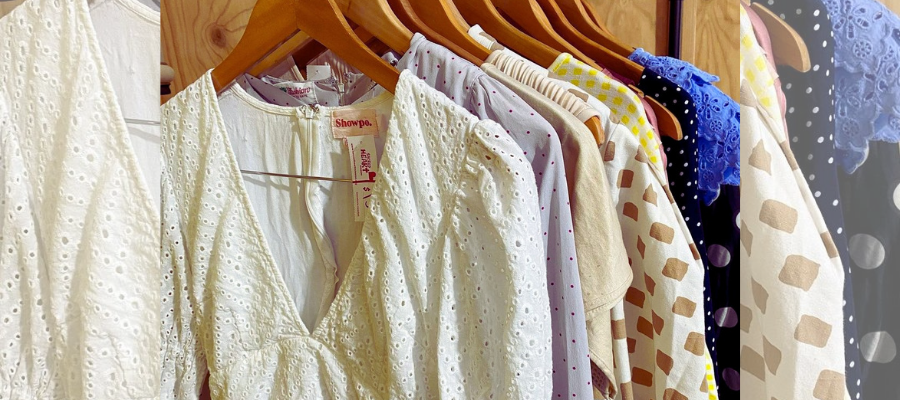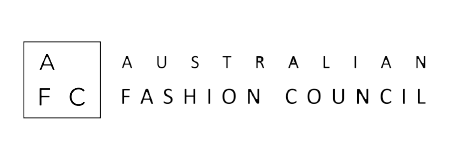Making more informed purchasing decisions is more important than ever. Whether it be supporting your favourite charity, buying fairtrade coffee or even just recycling your plastics correctly, these actions make us (and the planet) feel good. We know that buying preloved and ethically sourced pieces goes a long way but let’s dig a little deeper. I’ll share the key pros and cons of familiar fashion fabrics, to help us make more sustainable purchasing decisions for ourselves and our clients.
Natural Fabrics
Cotton
One of the most used fibres in the fashion industry, cotton is seen as king when it comes to decomposing. It is better than other materials such as polyester, another key player in our wardrobes. It’s a versatile, natural plant-based material which can be blended easily with elastane for stretch. But if we consider the fact that your average cotton t-shirt and jeans outfit requires 2,700 and 7,000 litres of water respectively to produce just one individual garment, then we can see that crown slip a little.
Linen
Made from flax plant fibres, linen is lightweight, strong and a great sustainable fabric choice. Traditionally, every part of the flax plant is used making the production cost-effective. Without dying linen, it comes in the natural tones ecru, ivory, tan and grey which are popular for Summer tonal dressing. The good news is they are even better for the planet given there’s no need for chemicals and dyes. When comparing lifecycles, a linen shirt uses 6.4 litres of water compared to 2,700 litres for cotton. #LinenLover
Sustainable alternatives to cotton.
Love cotton but looking to make a more sustainable choice? While all fibres require vast amounts of finite resources, we can look to Organic Cotton as a strong competitor. Organic Cotton is grown with less harmful chemicals and produces 46% less CO2 when compared to conventional cotton.
Sustainable Stylist Tip:
A great way to check that your cotton has been fairly farmed is to search for the GOTS label. The Global Organic Textile Standard label ensures your cotton tee meets social and environmental standards.
Synthetic Fabrics
Polyester
Another hot contender in our wardrobes are synthetic fabrics. Approximately 60% of garments on retail shelves today are made from synthetic fabrics like polyester. Synthetic fabrics are loved for their comfort and stretchiness but it’s important to remember that they are all made from petrochemicals aka big oil / the world’s largest pollutant. So, while they are cheaper to produce and purchase, they tend to not last as long as more sustainable fabrics which means cha-ching$ for fast-fashion retailers because you’re making a new purchase every season.
Nylon
Nylon is a man made synthetic fabric that’s durable and affordable but sometimes, that comes at a price. Nylon is not biodegradable and can take up to 200 years for the fabric to break down. Synthetic fabrics like Nylon also have the ability to release hundreds and thousands of tiny microfibres into our waterways. These little fibres, less than 5 millimetres in length, can unfortunately slowly poison our marine life. So what are some of the more ethical options when choosing a durable and affordable fabric?
Sustainable alternatives to synthetic fabrics.
Since most synthetic fabrics are so durable, op shops are regularly full to the brim with preloved activewear; often only worn a few times and way less than half price of new. If the thought of shimmying into someone else’s running tights makes your squirm, seek out brands that are using recycled polyester or Econyl (nylon waste fished from oceans transformed into regenerated nylon). While these fabrics still release microfibres, they do use less energy to produce.
Sustainable Stylist Tip:
Depending on your activity, see if you can swap the nylon for some organic cotton or hemp tights. Many brands are now harnessing the power of these natural alternatives for their active ranges.
Semi-Synthetic Fabrics
Semi-Synthetic fabrics are often touted as the third most commonly used fabric in the world. Naturally occurring fibres such as eucalyptus, beech or pine are harvested, broken down and reconstructed to produce fabrics like viscose, modal and lyocell.
Viscose:
Viscose (aka rayon) is a popular lightweight fabric commonly used in floaty summer dresses and as an alternative to silk. It’s lightweight and breathable making it a popular choice for manufacturers and consumers.
Modal
Modal follows the same process as its friend viscose, buut its fibres are stretched after spinning to make the filaments stronger and lighter, making it perfect for activewear and underwear. The majority of modal production is by the Austrian company Lenzing AG whose certified modal has a lighter footprint as it’s carbon neutral and requires less land and water. They also use sustainably managed beech tree plantations in Austria.
Lyocell or Tencel
Another fabric that’s excellent for activewear, the production of Lyocell or more commonly known as Tencel, replaces the traditional viscose chemicals with a non-toxic organic compound solvent that is easier to filter and can be reused in a closed-loop production. This closed-loop production means the solvent can be recycled over and over to produce new fibres and minimise harmful waste.
Which semi-synthetic fabrics to choose
While each of the above fabrics have their natural benefits, the rise of fast fashion has tainted their reputation with many being cheaply produced at the cost of our environment and natural resources. But, we are all here to make more informed decisions so it is worth knowing what the best options are when choosing a semi-synthetic fabric. Lenzing’s Modal and Tencel are great options due to their closed-loop production and sustainably managed beech plantations.
Sustainable Stylist Tip:
Before purchasing your new summer dress or stretchy yoga pants, do a little digging online and see if your favourite brand is transparent about their use of viscose or bamboo.
As we can see, the deeper you dig, the more there is to learn! While not all brands are clear on their supply chains or where their fabrics come from (sometimes they don’t even know themselves!) we can use our collective voices to push for more transparency within the fashion industry by asking brands ‘What’s in My Clothes?’ and combine this with more informed decisions about the fabrics we choose to buy and why. Keen to begin your journey to a more sustainable wardrobe? Here’s where you can start.
Get Thrifty
With around 80% of our discarded clothing doomed for landfill globally, now is the time to start buying preloved. Raid that second-hand store, visit those vintage gems hidden in backstreets, attend a swap meet. Want to take it virtual? Depop, eBay, Facebook Marketplace. Need to scratch that Gucci itch? Try Vestiaire Collective or The Real Real. Take it one step further and, commit to buying only second hand this September with Oxfams ‘Second Hand September’ pledge.
Get Picky
Not quite ready to get thrifty? Seek out brands that are transparent with their supply chains and materials. Look for certifications such as GOTS to ensure they are using sustainable fabrics. Try some recycled plastic activewear on for size. Seek out innovative brands who place importance on research into alternative textiles. Things such as food waste, plastic waste, old fabrics and deadstock fabrics can all be used to create new fabrics. The evolution of more sustainable fabrics is growing and it’s an exciting time to get involved and support brands with a dedication to making consumers and the planet feel good!
By Jenna Flood | ASI Graduate & Sustainable Stylist
“ASI’s education and ongoing support has given me the confidence to grow my business and establish myself as a sustainable style expert. I have presented talks and workshops for various councils and businesses, consulted with both female and male clients, organised a runway for VAMFF, and been a guest speaker for ABC radio.”





















